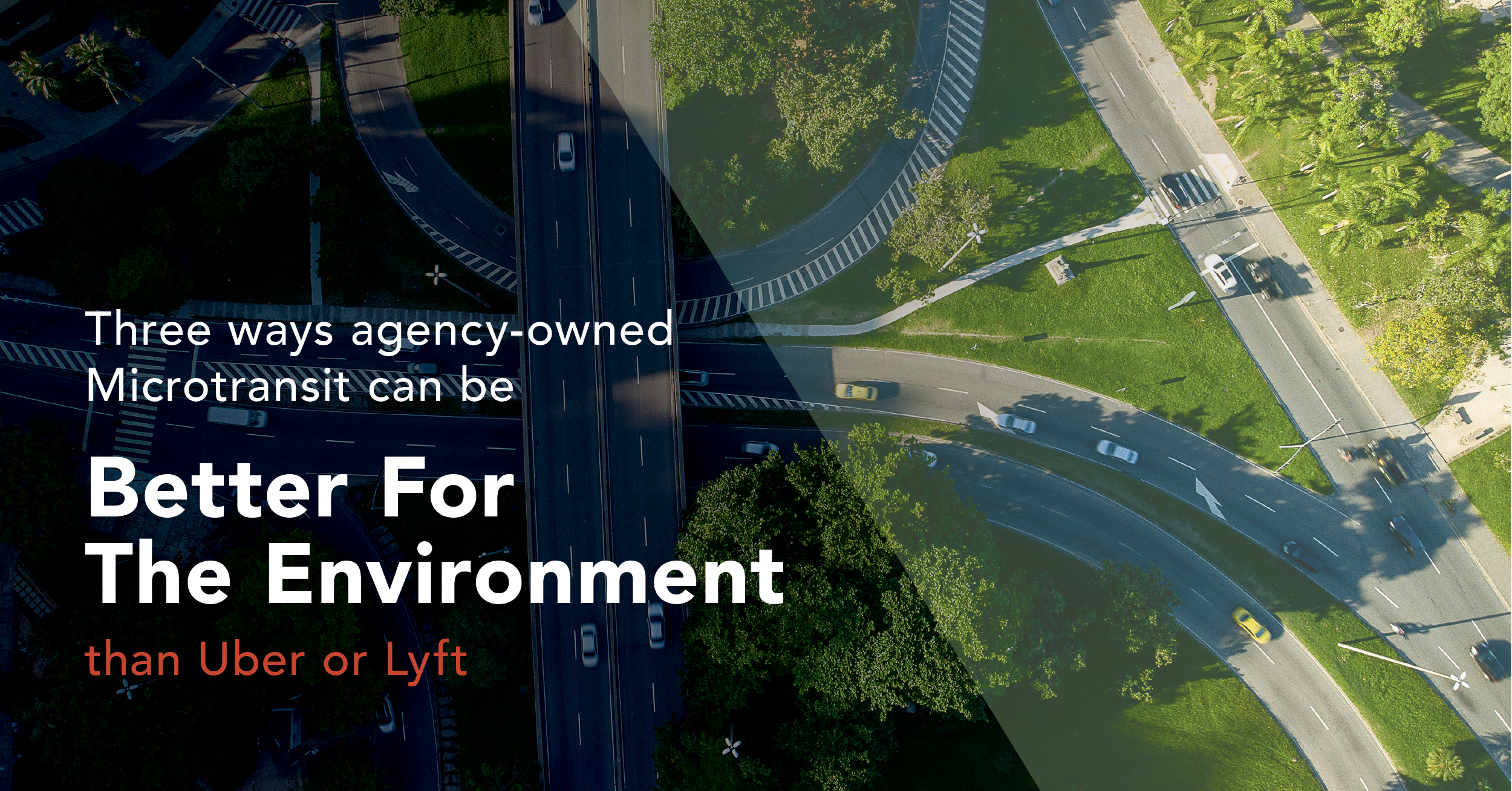
Uber was founded ten years ago, and has long since become a household word. The widespread adoption of TNCs (Transportation Network Companies) like Uber and Lyft has disrupted mobility in American cities, and has set new consumer expectations of transportation convenience. Studies of the impact of TNCs have found quite a few things to be concerned with, not least among them the environmental impact. TNCs have a high proportion of “deadhead” miles, in which drivers are traveling to pick up passengers with no passengers on board. A study of the Denver region found an increase in vehicle miles traveled of 41-84 percent for TNC rides.
Is there a way to offer the convenience and flexibility of door-to-door, app-enabled on demand transportation without the negative environmental impact? Agency-owned microtransit, in which transit agencies have the tools to offer TNC-like services, can be an environmentally friendly alternative. There are three reasons for this.
1. Agency-owned microtransit is designed to complement and enhance mass transit.
No door-to-door, individualized service, including people driving themselves, can match the efficiency of a highly productive mass transit route. A 40-passenger diesel bus breaks even compared to single occupancy vehicles (SOVs) at approximately 9 passengers; at full occupancy carbon emissions are reduced more than 5x compared to SOVs. Rail is closer to 10x reduction.
So some of the best things we can do to reduce carbon emissions are to increase use of transit and to encourage people to use mass transit instead of door-to-door rides when it meets their needs. Therefore, the most important aspect of agency-owned microtransit is being agency-owned. A transit agency can design their system to offer microtransit where it complements and enhances mass transit, not where it competes with it. This can mean:
- providing first-mile, last-mile service to transit stops
- providing microtransit services to fill transit deserts or more efficiently serve areas with unproductive mass transit routes — not for trips already served by mass transit
- providing incentives to use mass transit for as much of a trip as makes sense (through fare structures and other means)
Furthermore, by offering microtransit services that have the type of rider-centric, technology-enabled experience consumers have come to expect, transit agencies can increase the appeal of using the transit system overall and attract more riders.
Transit ridership has been declining year-over-year in most major cities in the United States. Reversing that decline and increasing transit ridership by 10 percent would save nearly 40 million metric tons of carbon emissions.
2. Agency-owned microtransit is designed to balance efficiency with rider convenience.
Uber and Lyft are designed primarily to serve single trips. While UberPool and Lyft Line combine trips, they are separate options serving a minority of total trips, and only when chosen by the rider. In contrast, since agency-owned microtransit services are owned by transit agencies, the technology is designed at its core to dynamically generate schedules that balance vehicle efficiency with rider convenience. Knowing the service is provided by a transit agency sets the expectation with riders that the trips will be shared. A system where all trips are eligible to be combined with others when it’s efficient and minimally inconvenient makes it possible for door-to-door trips to be served with fewer total vehicle miles, and hence lower environmental impact.
3. Agency-owned microtransit allows for environmentally-minded capital investments in vehicles.
One of the greatest opportunities to decrease the carbon impact of transportation is with efficient vehicle technologies. Microtransit services owned by transit agencies open the door to communities and governments investing in these technologies. While Uber and Lyft rides are served by whatever vehicles drivers already own, transit agencies can make strategic decisions to transition entire fleets to new technologies. This is already happening in places like Sacramento California, where microtransit services are being provided with electric vehicles. Since transit agencies exist to serve their communities, the goals of those communities, including environmental sustainability, are taken into account.
Transportation contributes nearly a third of our greenhouse gas emissions in the United States. Keeping transit agencies and cities at the center of critical decisions about how mobility will evolve in their communities lays the groundwork for transportation to continually decrease its environmental footprint. Agency-owned microtransit systems demonstrate that this can be done without sacrificing the rider experience, and in fact helping integrate transit options into a system that will serve us all well.
Want to learn more? Continue reading about how public transit is helping to save our planet here!
Download our Agency-Owned Microtransit Executive Guide today!